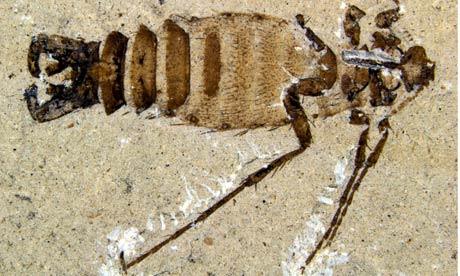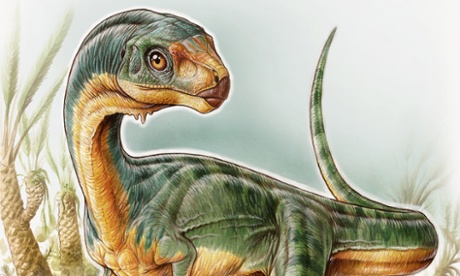Fossil hunters have uncovered the remains of giant Jurassic fleas that sucked the blood of ancient beasts more than 100m years ago.
The oversized insects had long, serrated sucking tubes for piercing dinosaur hides, and used spines on their bodies and sharp claws on their legs to cling to the fur and feathers of their prey.
The insects resemble modern fleas in many respects, but grew to between five and ten times their size, with some females reaching more than 2cm long. Unlike modern fleas, they had yet to evolve specialised legs for jumping.
"They were not jumping insects, their biology is very different. They were probably creeping between the feathers or the fur of the animals they came across," said André Nel, a palaeontologist at the National Museum of Natural History in Paris.
Speaking to the Guardian from a field trip in Aix-en-Provence in southern France, Nel said the ancient fleas may have fed on flying reptiles called pterosaurs, and perhaps early mammals, such as the rodent-like multituberculates.
An international team of researchers from China, France and the US examined nine fossilised fleas recently unearthed at two sites in China. Five of the specimens, from an ancient lakebed in Ningcheng County, Inner Mongolia, are believed to be 165m years old.
"It is very special to have found these fleas in this environment because it was an ancient lake. Either the animals got the fleas off in the water, or they died in the water and the insects died not far from them," Nel said.
Four other specimens from a rocky outcrop in Liaoning Province in northeast China were said to be 125m years old, according to a report in the journal Nature.
Some of the fossils were dug up by people living in the nearby countryside, who sold the specimens on to scientists.
The insects' features are so well preserved the researchers could identify claws on each flea's six legs. There were tiny teeth on the claws that helped the insects cling to hair shafts and feathers. Fine spines on their bodies and legs were also visible.
Comparing the sexes revealed that females had larger bodies and mouthparts than males, with longer sucking tubes to feed through. The male genitalia were "large and exposed", the authors write in the journal.
The discovery gives researchers a rare glimpse of how fleas evolved. The long, serrated piercing tubes and grasping claws of the ancient insects imply they adapted to feed on hairy animals or feathered dinosaurs, and moved to mammals and birds later on.











